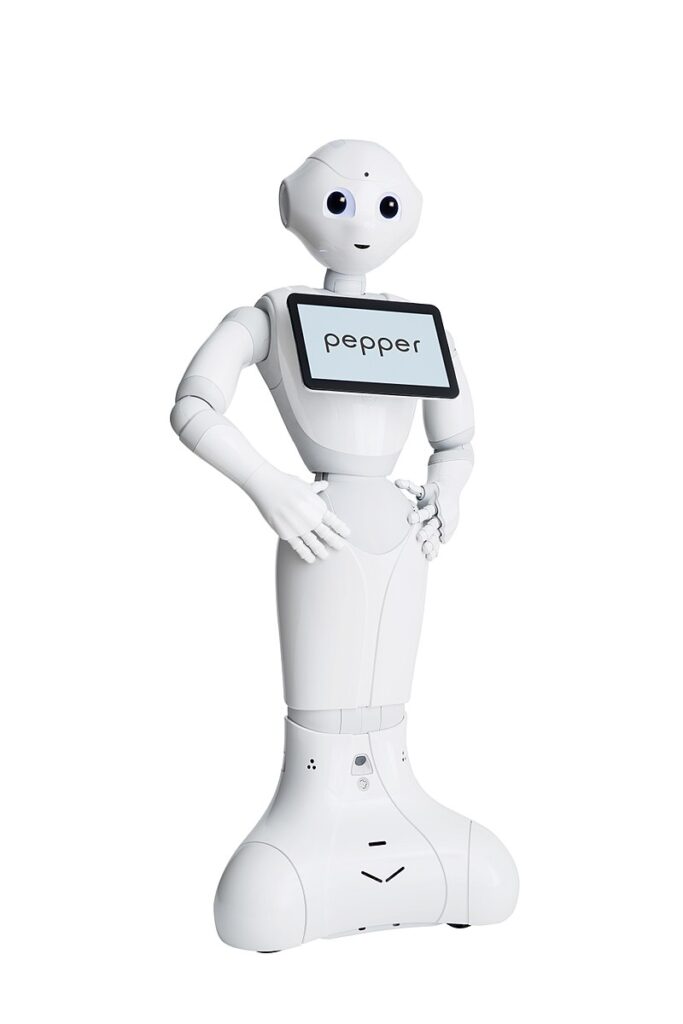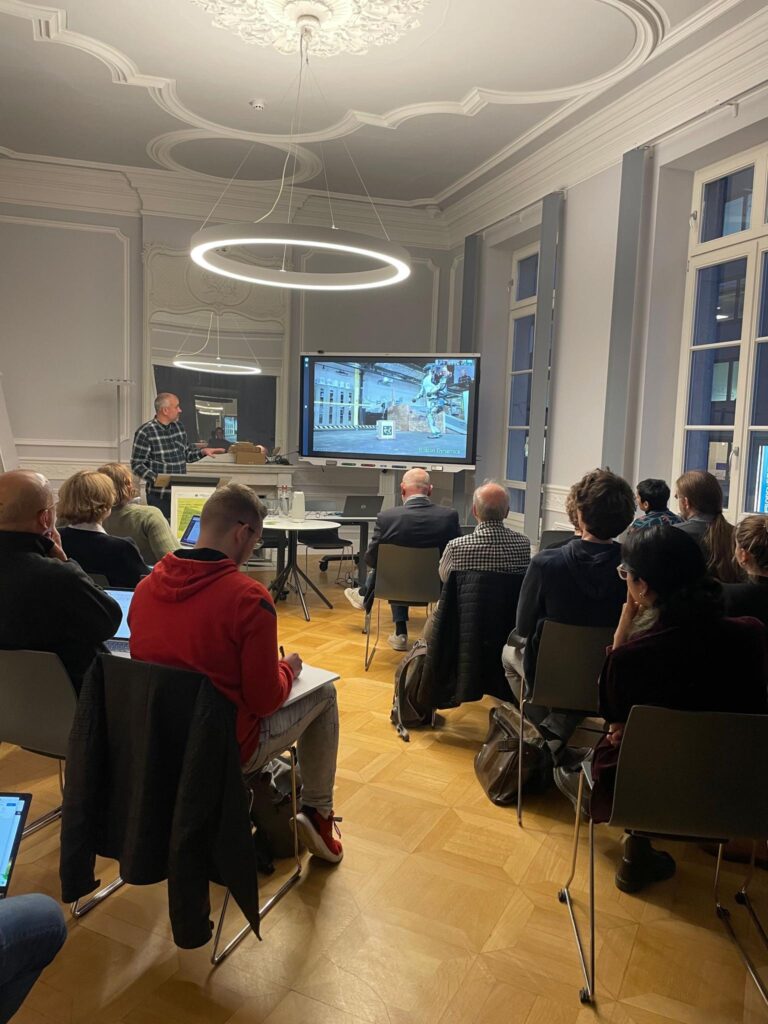On November 8, Dr. Andrei Korbut warned that he will disappoint philosophers, sociologists and roboticists in what he delivered as the second lecture of the c:o/re Lifelikeness series. He disappointed to disappoint any of these. The Lifelikeness c:o/re lecture series addresses a public even broader and more diverse than previous c:o/re lectures, as it now also engages postgraduate students coming from a vast array of disciplines through the Projekt Leonardo.

Dr Korbut discussed Human-Robot Interaction (HRI) from a perspective enabled by construing robots as laboratory “animals”. He invited the audience to reflect on this view by watching a famous 2016 video produced by Boston Dynamics which shows a researcher (physically) obstructing a robot to complete its task to pick up an object. Dr. Korbut asked the audience what do they feel when watching this scene, whether they feel sorry for the robot and whether the human is bullying? He explained that the feeling the humans might feel when watching such a scene is purposefully employed in laboratory studies on HRI. This led Dr. Korbut to note that HRI is one of the fastest growing and most dynamic subfields in robotics currently, raising salient questions in fields like communication studies, psychology and design. Particularly given the multidisciplinary branching that it implies, it is important to note that robotics is not exclusively academic. HRI has a strong commercial stake.

Dr. Korbut explicated the conceptual framework to study robots as contemporary laboratory “animals” as inspired by various notions of types of lifelikeness that can be ascribed to humanoid robots. He argued that robots allow for a closer connection between tools and objects in knowledge production than other types of laboratory “living instruments” because robots are not perceived as “natural objects”. In this line of inquiry, Dr. Korbut’s c:o/re fellowship project focuses on the robot Pepper, designed by SoftBank Robotics. Pepper is a 1.2-meter-tall mobile humanoid robot with 20 degrees of freedom and 20 sensors, microphones and actuators. It can process and synthesize speech in natural language, and it is commercially promoted as capable to recognize basic human emotions. Its appearance is deliberately “cute” and genderless because it is designed to be interacting with by humans in offices, cultural institutions, homes and medical settings. It is currently one of the most popular machines in robotics laboratories globally.
As such, Dr. Korbut is now exploring Pepper’s “academic career”, from manufacturer to publication, where the robotics lab is the crucial passage point. In this inquiry and by pondering on the knowledge that Pepper produces, Dr. Korbut is bringing together but also transcending the disciplinary limitations of laboratory studies in general, robotics laboratories studies, and laboratory animal studies. In laboratory sciences, Dr. Korbut takes Karin Knorr-Cetina‘s notion of epistemic cultures as a guiding optics, where “Laboratory sciences subject natural conditions to a “social overhaul” and derive epistemic effects from the new situation” (Knorr-Cetina 1999, p. 28). Further, he draws an insight from, but also argues for expanding Andreas Bischof’s view that when roboticists “laboratize“, they reduce “the complexity and contingency of social situations” (Bischof 2017: 225, 229). This leads him to observe the importance of Voss’ apparently paradoxical remark that “the practice of representing the robot as both an inanimate object and an animate being is an integral and constructive aspect of roboticists’ work”. At this point, Dr. Korbut remarks the relevance of the term lifelikeness. Particularly, via this term, the discussion is construed in terms of the simultaneous attributing and avoiding the attribution of lifelikeness to machines.
Dr. Korbut advocates employing the term lifelikeness, rather than animacy (in Voss 2021), in this debate because it enables drawing parallels between robotics studies and laboratory animal studies. While lifelikeness may mislead, because it suggests that roboticists may impute “life” to their machines, it opens up the some mitigating possiblities by indicating that “life”, in this discourse, is defined pragmatically, in the context of “laboratory life”, as referring to a property of the object used in the laboratory to produce knowledge. As such, robots are closer to laboratory animals, such as mice and Drosophila than to the wooden idols of animistic practices described by cultural anthropologists.
Dr. Korbut argues for a theory that construes robots as “animals” of very specific kind. Because they are detached from the laboratory environment much more than animals like mice or Drosophila, roboticists can secure a tighter link between tool and object. This link, Dr. Korbut argues, is based on roboticists’ ability to procure and exploit three types of lifelikeness that can be attributed to the robots, all which come down to considering the body as moving, interacting and manipulating.
In this light, Dr. Korbut considers that humans empathise with robots not because we identify with them but because of the particular configuration of robots’ hull – their programming, movements, and the material environment – corresponds to a recognizable type of lifelikeness. In brief, in the laboratory, robots hinder their being perceived as “natural objects”.
References
Bischof, A. 2017. Sozial Maschinen bauen: Epistemische Praktiken der Sozialrobotik. Transcript.
Knorr-Cetina, K. 1999. Epistemic cultures: How the sciences make knowledge. Harvard University Press.
Voss, L. 2021. More than machines? The Attribution of (In)Animacy to Robot Technology. Transcript.

2 Comments on “Robot, a Laboratory “Animal”: Andrei Korbut on how robots produce knowledge in laboratories”
Leave a Reply
You must be logged in to post a comment.




Pingback: Lecture Series “Lifelikeness”
Pingback: c:o/re Highlights of 2023: A look back